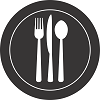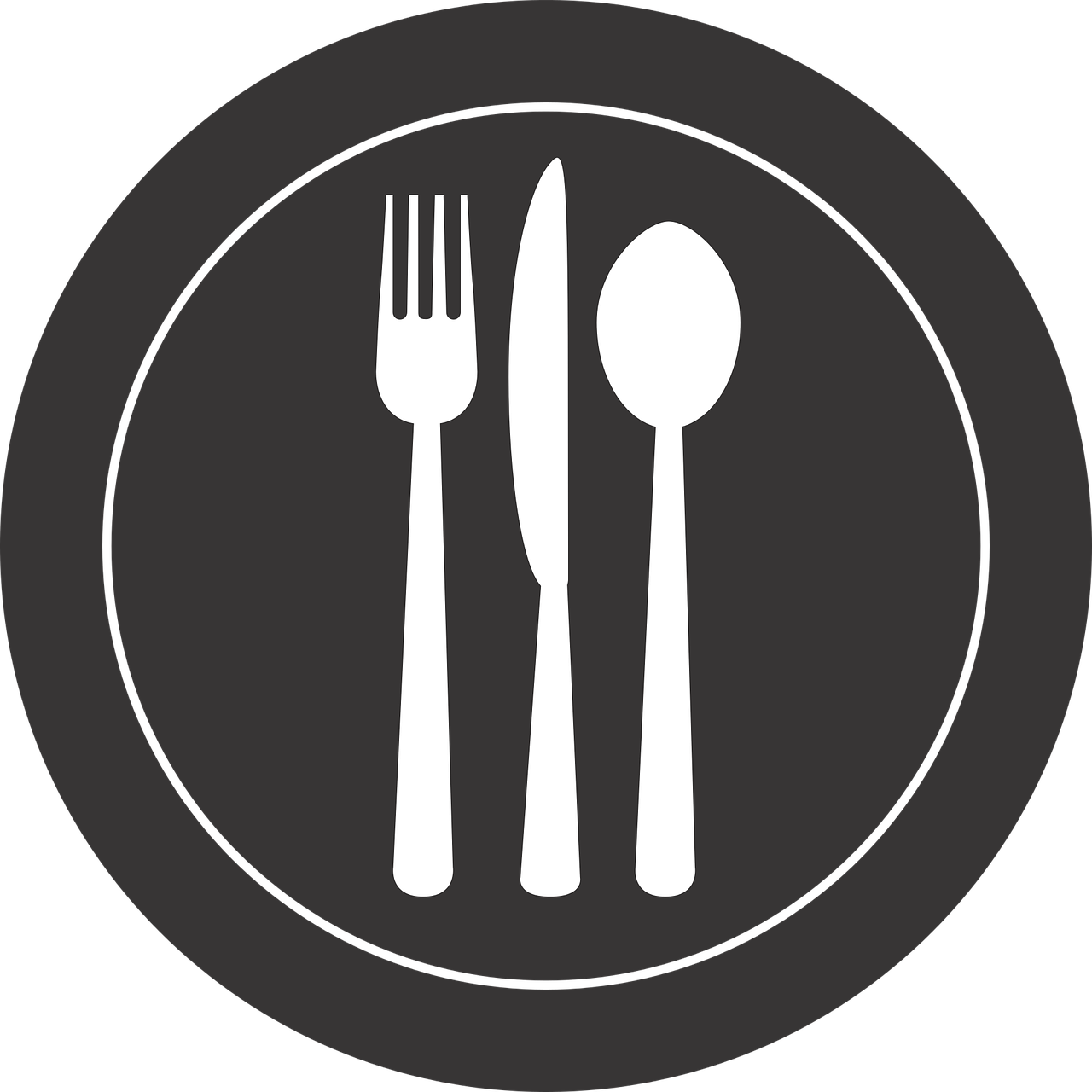
-
Records also include a table that tracks the following information.
Food depiction - Incidental
- Featured
- Storyline
- Wildlife
INCIDENTAL depictions provide context or background and may be minor or small on the page. Eighty-nine percent of the dataset contains incidental food depictions.
FEATURED depictions are those that loom large or central on a page, but may be tangential to the storyline.
In a small number of books in the dataset, food is not only featured, but is central to the STORYLINE.
Books showing WILDLIFE (non-anthropomorphised and non-domestic animals) feeding are noted.
Food types - Everyday foods
- Everyday drinks
- Discretionary foods
- Discretionary drinks
- High sugar foods
- High fat foods
- High salt foods
- Processed foods
- Fresh foods
- Fast food/Takeaway
- Bushtucker
The Australian Dietary Guidelines (2013) recommend some foods be eaten every day, and others (high in kilojoules, saturated fat, added sugars and salt), should be eaten only sometimes and in small amounts. The latter are called discretionary as they are not an essential or necessary part of the diet.
EVERYDAY foods include fruit and vegetables, bread, meat, tea/coffee and water.
DISCRETIONARY foods include cakes, cupcakes, biscuits, ice-cream, potato crisps, cordials and soft drinks.
FAST FOOD/TAKEAWAY includes pizza, hamburgers, pies and hot chips.
BUSHTUCKER refers to native Indigenous foods traditionally hunted and gathered.
Food practices - Eating in - meal
- Eating in - snack
- Eating out - meal
- Eating out - snack
- Eating out - picnics
- Parties and Entertaining
- Food production
- Food shopping
- Food selling
- Food preparation
- Food serving
EATING IN: meals and snacks in domestic settings, or references to meals such as 'After dinner...'
EATING OUT: meals and snacks in cafés and restaurants, or outdoor picnics.
PARTIES and ENTERTAINING: birthdays and special occasions, social gatherings such as morning and afternoon teas with others.
FOOD PRODUCTION: includes domestic vegetable gardens, crops, orchards, milking cows, collecting eggs from chickens.
FOOD SHOPPING: characters shopping in supermarkets, specialty food stores and markets.
FOOD SELLING: characters selling food in shops and markets.
FOOD PREPARATION: includes chopping and mixing ingredients, and cooking in a domestic or commercial kitchen, or over a bbq or fire.
FOOD SERVING: depictions of people offering food to others, carrying prepared foods to a meal or snack setting, waiting on tables in cafés and restaurants.
Gender - Food production - female
- Food production - male
- Food shopping - female
- Food shopping - male
- Food selling - female
- Food selling - male
- Food preparation - female
- Food preparation - male
- Food serving - female
- Food serving - male
This notes the gender of the character involved in food provisioning practices: production, shopping, preparation, serving.
Signage - Signs for real products
- Signs for fictional products
- Shop sign
- Logo
As part of creating urban and suburban settings, illustrators include signage in their streetscapes – billboards, shop windows, awnings. Some illustrators reference food/drink brand logos either in signage or on items. Positive/negative value - Positive framing of everyday foods
- Positive framing of discretionary foods
- Negative framing of everyday foods
- Negative framing of discretionary foods
In both featured and incidental depictions, food references may be value-laden. POSITIVE or NEGATIVE FRAMING may occur where a character's food preferences are articulated in the narration or dialogue, or where a character actively seeks out or avoids certain foods.
The use of colour, facial expressions and page layout to create certain moods can also frame foods positively or negatively.
Food as sense of place
- Domestic
- Urban
- Rural
- Historical
- Normalising the fantastical
Food-related depictions, mostly incidental, help establish a sense of place in stories. For example, fruit bowls and hot beverages are frequently found in DOMESTIC settings; URBAN streetscapes usually include signage for food outlets; vegetable gardens or other forms of food production are common in stories set in RURAL environments.
Food is often referenced in books with HISTORICAL settings.
In books with fantastical elements (such as anthropomorphised animals), food references may be used to make characters and settings familiar and relatable, NORMALISING THE FANTASTICAL.
Setting
- Domestic interior
- Rural landscape
- Urban landscape
- Bush, beach, nature
This notes the primary setting of the book. Food is not always used in these settings to establish a sense of place, although it can serve this purpose (see above).
Food as social cohesion - Family meals
- Social gatherings
- Relationships
Sharing food with others is a central social ritual that establishes, expresses and consolidates our social ties. Aside from FAMILY MEALS, food is shared at SOCIAL GATHERINGS such as celebrations.
Food references can also be found in scenes between characters that highlight their RELATIONSHIPS, such as a boy and his grandfather sharing a picnic lunch on the beach, or a girl's dessert being withheld by her mother as a consequence of bad behaviour. Relationships are also expressed by the giving of comfort food.
Food as cultural identity
- White Australian characters
- Non-Anglo characters
- Indigenous Australian characters
- Ethnographic story
- Refugee story
- Migrant story
- Stereotyped ethnicity
This notes whether the featured characters in the book are obviously WHITE AUSTRALIAN, NON-ANGLO or INDIGENOUS AUSTRALIAN.
Stories that feature non-Anglo characters may be ETHNOGRAPHIC (set in another culture, about that culture), REFUGEE TORIES or MIGRANT STORIES.
Some stories use a food-related STEREOTYPED ETHNICITY to indicate cultural identity, such as a Chinese family eating with chopsticks, an Italian family making tomato sauce, Australian characters eating lamingtons.
Food as character identity
- Food as a visual handle
- Food preferences
- Imagining food
- Food names
Some illustrators use a food-related reference as a VISUAL HANDLE aligned with a character. For example, Leigh Hobbs's character Old Tom is almost always seen on the page with a fish skeleton in hand.
FOOD PREFERENCES are used in some titles to indicate character identity, with food likes and dislikes listed.
How we think about food shapes our relationships to what we eat. Some books reference characters dreaming of and IMAGINING FOOD.
FOOD NAMES are a direct way of aligning foods with character identity, drawing on word play (such as Charlie Parsley) as well as associated meanings of the food type (such as Applesauce the pig).
Food as language
- Food metaphors and similes
- Food exclamations
- Food place names
Food references in METAPHORS AND SIMILES and EXCLAMATIONS draw on assumed values of food types (e.g. sweet food = positive value). They can also be abstract and synaesthetic, linking sound and touch to taste.
Food references are occasionally found in PLACE NAMES
Further reading: National Health and Medical Research Council. "Australian Dietary Guidelines: Summary." Australian Government, Department of Health and Ageing, 2013.
You might be interested in...




